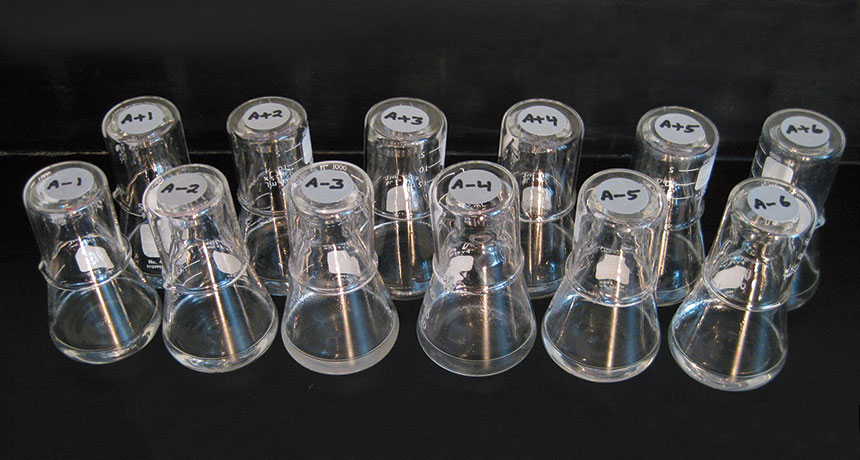
FLUKE FLASK During a long-term evolution experiment, bacteria in the flask designated Ara-3 have undergone surprising changes. One population developed the ability to eat citrate. A catastrophe drove another population to extinction, researchers have discovered.
NEERJA HAJELA AND BRIAN BAER/MICHIGAN STATE UNIVERSITY
Sometimes extinction is just a fluke, a long-term experiment in evolution has shown.